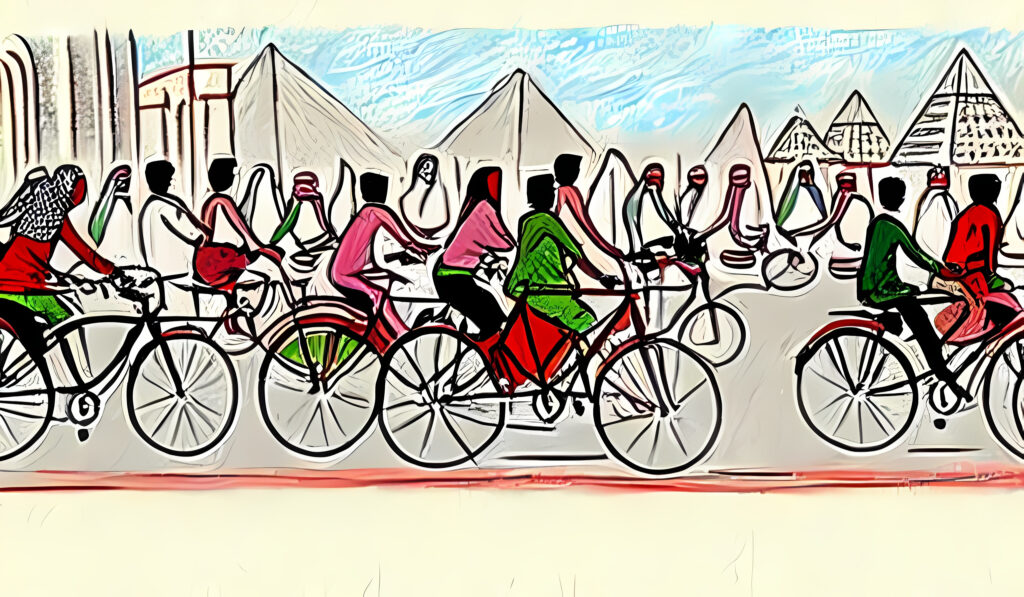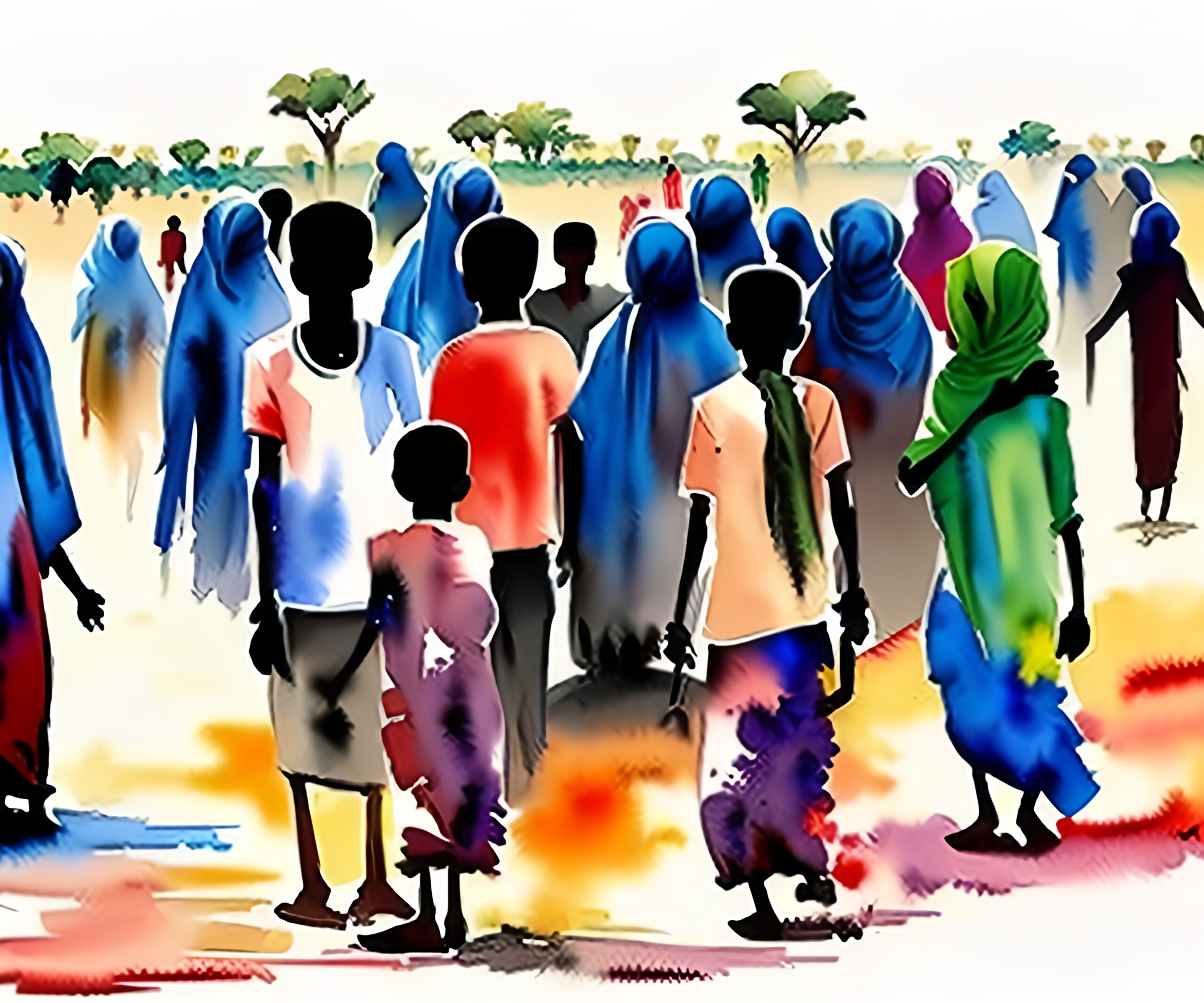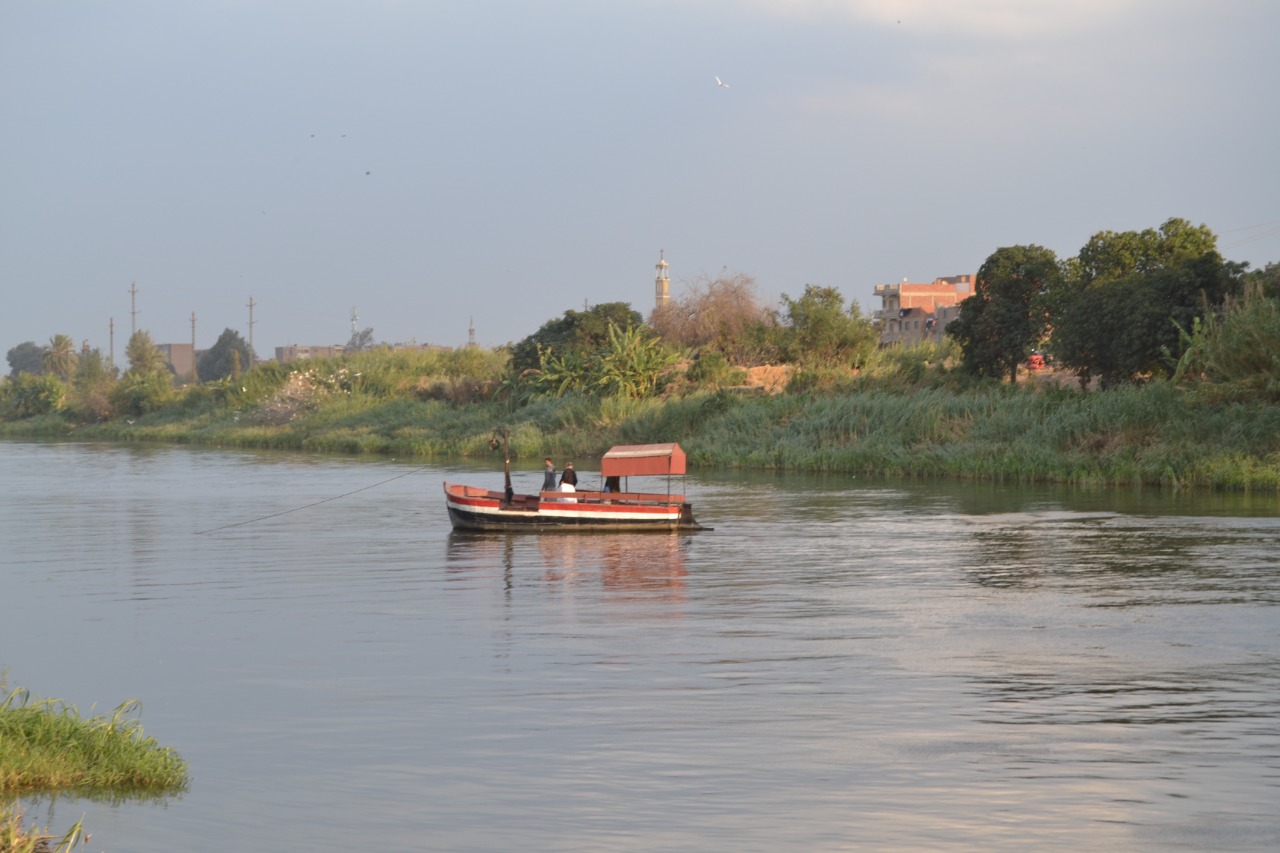Rabab Azzam
On October 20th last year, the government of the Egyptian capital, Cairo, launched the first phase of the “Cairo Bike” project, one of the projects that the Egyptian President, Abdel Fattah El-Sisi, has been hinting at since the first year of his presidency in Egypt. Officials developed the idea of a public bike-sharing system in the streets of the capital, and the first phase was inaugurated with 250 bicycles distributed across 26 stations in the downtown, Garden City, and Zamalek areas (vibrant areas in the center of Cairo), through a modern electronic system based on an application for bike reservation, for a fee of one Egyptian pound per hour (about 0.03 US dollars), with a maximum of eight pounds per day (about 0.27 US dollars). The bike is connected to an electronic tracking system and a location identification system to prevent theft and better control its users. According to official statements, the second phase of the project will be implemented by adding another 250 bikes, bringing the total number of stations in the aforementioned areas to 45.
The inauguration of the first phase of the project generated significant interest and media coverage in Cairo. Even the Egyptian Prime Minister himself was present at the opening in one of the most prominent squares in the city, indicating the political leadership’s interest in the matter. El-Sisi, who was first seen riding a bike on the streets of Cairo while running for the presidency in March 2014, repeatedly called on Egyptians to use bikes to “reduce energy consumption supported by the state in billions of dollars annually.” This means that the start of the call to return to the culture of biking is primarily an economic objective for the Egyptian regime.
How did the idea of Cairo Bike emerge?
The project called “Cairo Bike,” which aims, according to official statements, to promote the use of bicycles to help reduce the economically costly traffic congestion, as well as reduce environmental pollution in the Egyptian capital, classified by Forbes’ report in 2018 as one of the most polluted cities in the world. The project was launched with the support of the United Nations Human Settlements Programme, which held talks with the Egyptian government to implement the project since 2016, and a memorandum of understanding was signed in July 2017 between the Governorate of Cairo and the UN organization.
Then, in July 2019, the collaboration was formed with technical support and supervision from the Institute of Transport Policy and Development and the United Nations Human Settlements Programme, with funding of $1.4 million from the Swiss Drosos Foundation. However, since then, there has been no talk about the project until Cairo revived it in conjunction with its preparation to host the COP27 UN Framework Convention on Climate Change in November last year in Sharm El Sheikh (on the southeastern coast of the Sinai Peninsula).
Criticism has been directed at the Egyptian regime for the project’s suspension since 2017, and activists have accused the regime of trying to obstruct or postpone it in favor of other projects/programs that may be more profitable launched by the Egyptian government with the support of the Presidency Foundation. Among them is the “Bicycle for Every Citizen” initiative launched in 2019, which aimed to distribute bicycles to citizens and university students at reduced prices, according to officials in the Ministry of Youth and Sports, who explained that the first phase would include the distribution of 100,000 bicycles. However, after nearly three years, only 9,600 bicycles have been distributed in three stages through the “Your Bike, Your Health” initiative, which was launched in June 2020. The first phase witnessed the distribution of only 1,000 bicycles, although the number of applicants exceeded 100,000.
Post-opening Criticisms
Following the opening of the first phase of the project, widespread criticisms of the management of the 2-kilometer bike paths that extend from Tahrir Square through Talat Harb Street and some of the branching streets have spread on social media. This is especially true with the emergence of video clips taken by citizens showing that some of those paths have become alternatives to waiting for cars or a path for pedestrians rather than fulfilling their original purpose. Twitter users and activists have circulated these clips, questioning the success of the project, especially as the system was launched just days before the climate conference, which raises questions about whether the purpose of the project was to beautify the image of the regime itself before the climate conference.
During a field tour that included some interviews with citizens in the downtown area, opinions were divided between supporters and critics of the project. The supportive team sees that the project is suitable for residents of nearby areas who work within the city center and can use bikes as an alternative means of transportation to expensive taxis. The critics see that the project is nothing more than political propaganda to beautify the image of the regime and present an imaginary concept that the current government, which cuts down trees and reduces green spaces – which some Twitter users called “massacres of mature trees” – and increases the construction of cement roads and buildings, is an environmentally friendly government, which is contrary to the steps it takes in reality.
Meanwhile, an informed source explained that there are other uses for bikes by “delivery workers” who rent bikes for eight hours a day instead of buying a bike to use in delivering orders to customers.
Improving the Visuals Ahead of Hosting COP27
Official statements by the Egyptian government did not deny that the launch of the project is linked to Egypt’s preparations to host the Climate Conference (COP 27) which took place last November. However, the official announcement of the state only highlighted information about the number of stations and bicycles used in the first phase of the project, but ignored the details related to the necessary infrastructure and safety factors, including allocating sufficient safe paths for cycling, especially as the streets of Cairo are designed primarily for cars, installing traffic signals and putting up signs for cyclists, distributing safety helmets, or creating traffic laws suitable for the use of bicycles.
Perhaps this is what Rania Hedaya, the director of the Qatari program for the United Nations Human Settlements Program in Egypt, was referring to when she said in her statements that “the project will contribute to changing the way city streets are planned, as thinking is usually focused on cars in city planning. We believe that the priority in planning should be to enable people to use various means of transportation in their daily travels from one place to another. Instead of resorting to expanding the streets, we are now taking parts of them for cycling. This is in line with Egypt’s 2030 vision, and the dialogues and negotiations witnessed by the climate conference, which is why the United Nations Human Settlements Program has been engaged in dialogue with the Egyptian government for years to introduce new sustainable transportation systems such as bicycles and link them to traditional mass transportation networks such as the metro or buses, to encourage people to reduce their reliance on their private cars for transportation.”
Activists accuse the Egyptian regime of attempting to beautify the city just to improve its image for the climate summit hosted by Sharm El-Sheikh, and that Cairo was expecting to receive a package of special aid and financing that might help it overcome the economic crisis and the severe shortage of foreign currency reserves. Egypt did indeed receive some aid that was announced by some participants, such as US President Joe Biden, who emphasized the US’s support for Egypt in the field of renewable energy and reducing carbon emissions.
Congested Streets
Perhaps the most pressing question regarding the “Cairo Bike” project, which is echoed by experts in the field of environment and road engineering, is whether Cairo’s roads are suitable in the first place to accommodate bike lanes.
In a joint booklet issued by the Transport and Development Policy Institute and the United Nations Human Settlements Program, the participants said that “bicycle lanes should be placed between the pedestrian pathway and the roadway to reduce pedestrian collisions. Bicycle lanes are physically separated from the roadway, compared to bicycle lanes that are distinguished by paint, to provide little protection for cyclists. At least one meter should be allocated for one-way paths, and three meters for two-way paths. Columns should be installed to prevent motor vehicles from encroaching on these paths, leaving a space of one and a half meters between each column.”
While the Cairo Bike project was originally launched under the sponsorship and participation of the Transport and Development Policy Institute and the United Nations Human Settlements Program, the officials responsible for the project did not take into account the standards outlined by the institute in its research when they began planning and implementing the bike paths for the project. The Cairo Governorate has announced the construction of bike paths in downtown streets as a first stage, spanning 2 kilometers on Mohamed Farid, Talaat Harb, Qasr El Nil, Mostafa Kamel, and 26 July streets, with a path width of approximately 1.7 meters, which is less than the proposed standard of 2 meters for one-way paths, or 3 meters for two-way paths. Some road experts criticized this, arguing that some old areas and cities cannot plan bike paths, especially Cairo, which has roads that are not qualified for bike paths due to severe congestion, as well as pavement encroachments, which force citizens to descend to the road alongside cars. Therefore, it is possible to implement such paths in new cities and neighborhoods…







